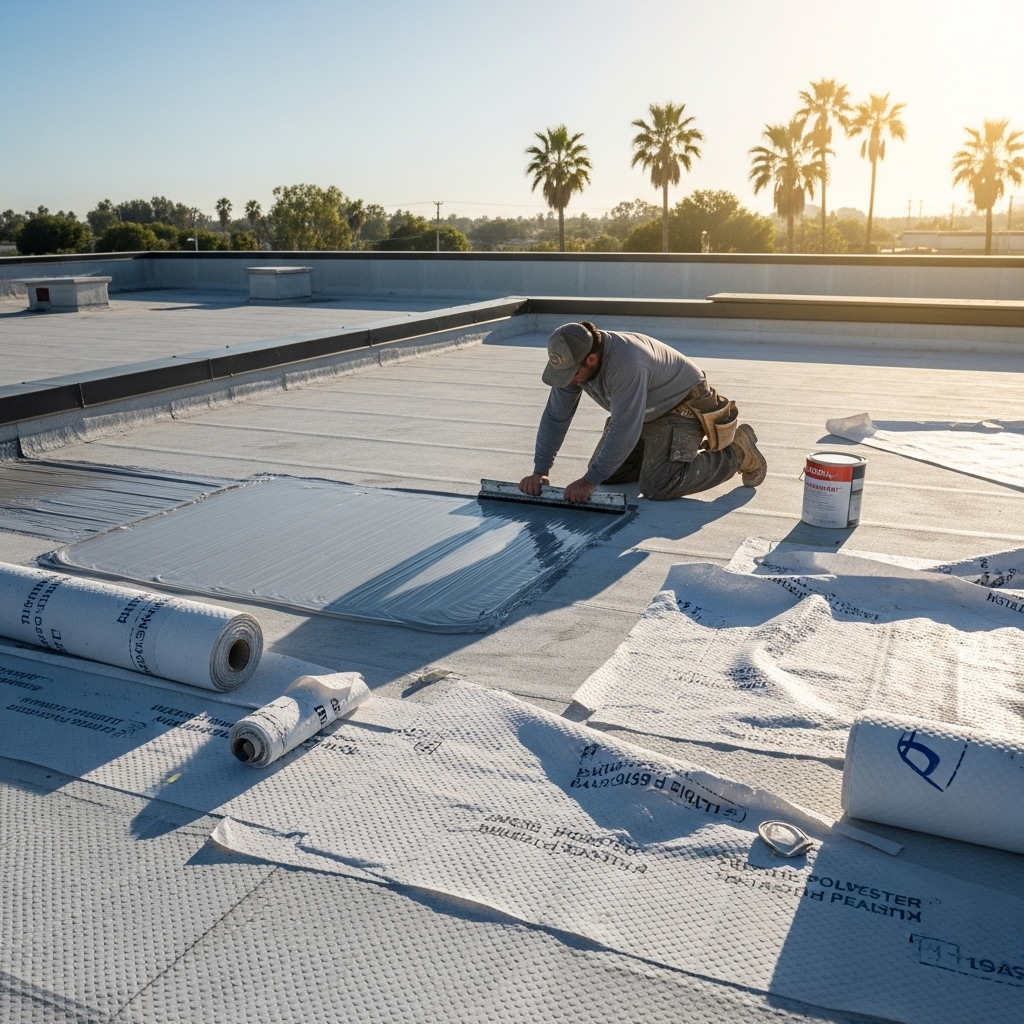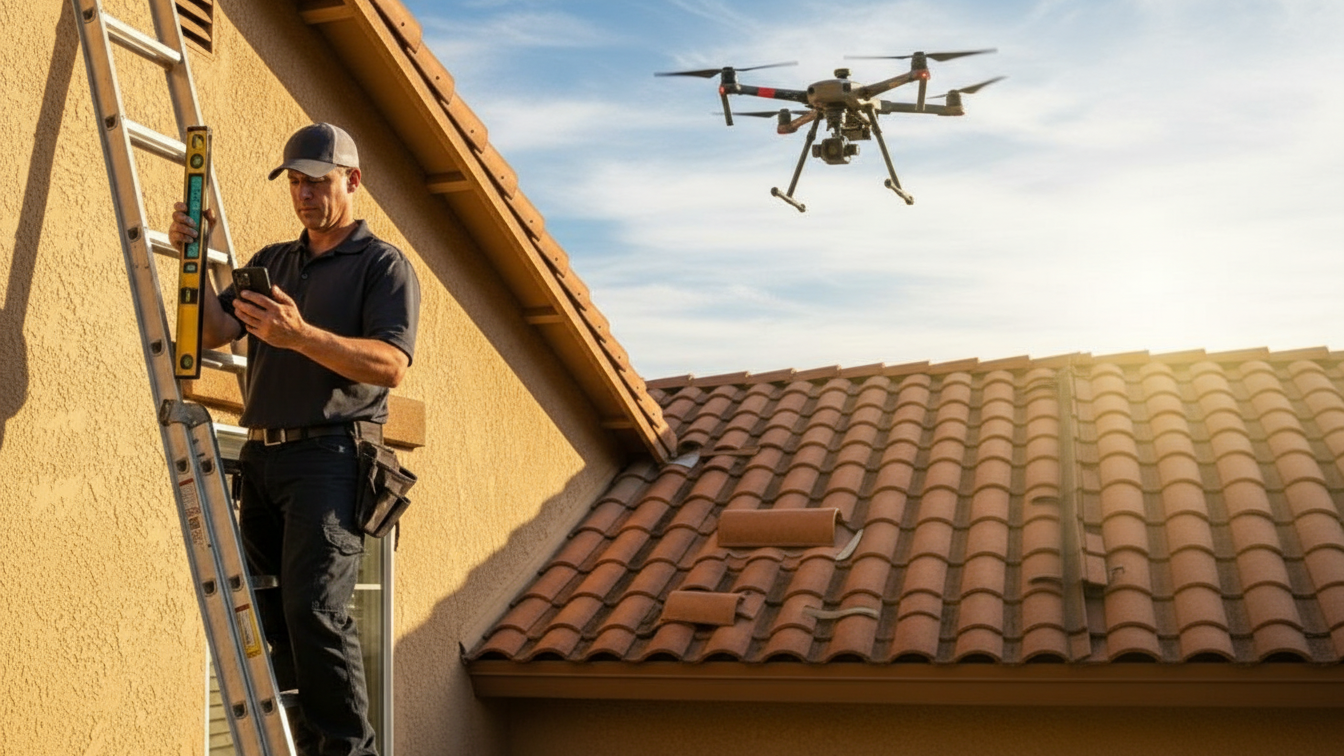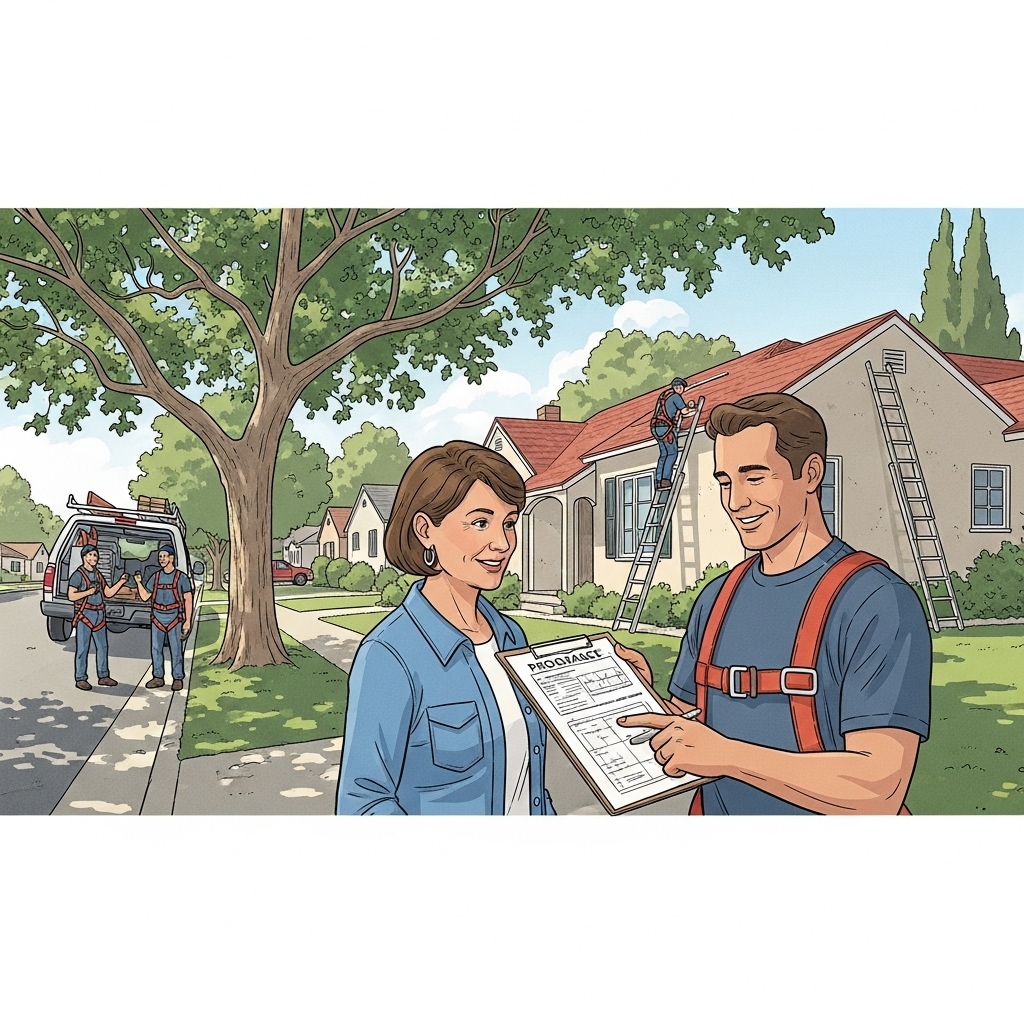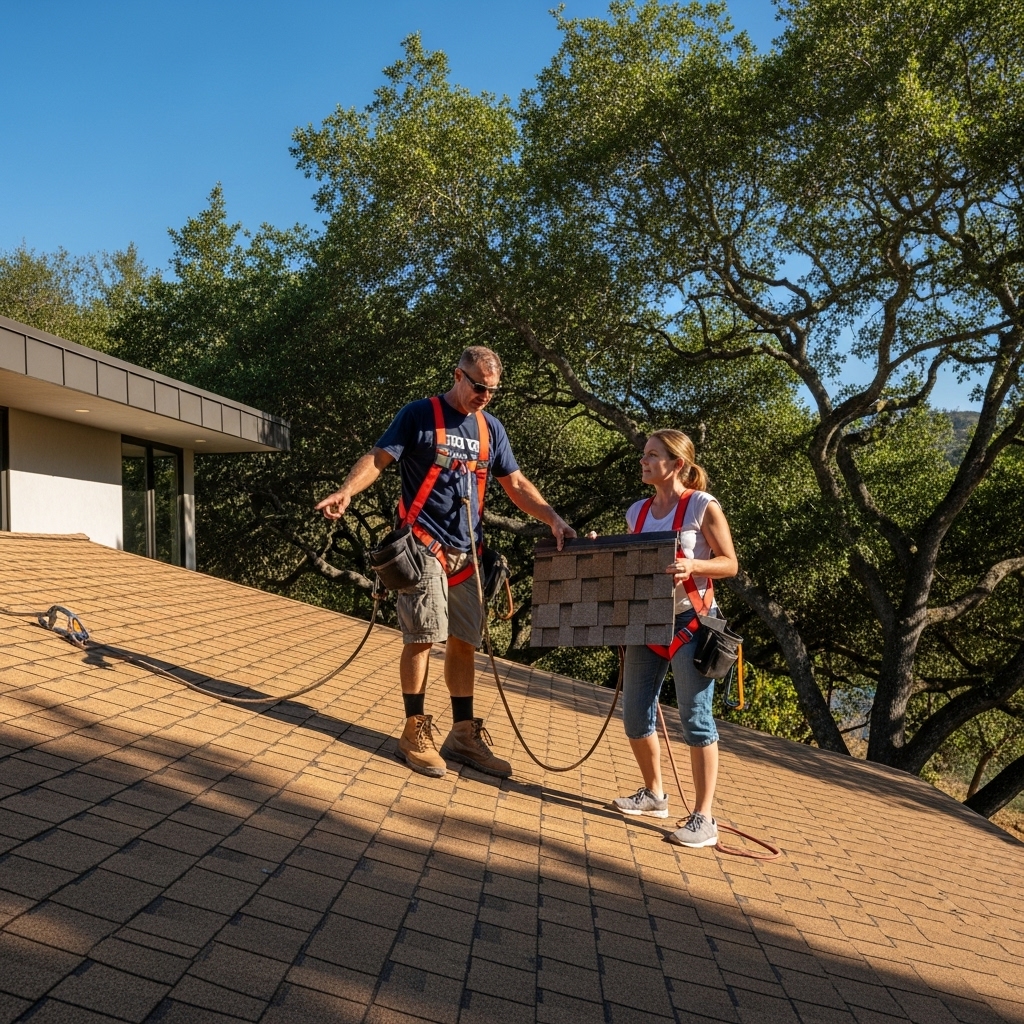Ask ten Tarzana property owners about waterproofing a flat roof and you will hear variations on a theme: keep water out, keep interiors cool, and do it in a way that respects the building’s age and character. Our neighborhood’s mix of mid-century homes, small apartment buildings, and low-rise commercial spaces means there is no one-size-fits-all answer. Still, the silicone-versus-acrylic question comes up repeatedly, and for good reason. Both can be excellent topcoats when matched to the right substrate and conditions. The secret is honest evaluation of the deck beneath, the way water actually behaves on your roof, and how Tarzana’s UV-heavy climate stresses materials. If you start from that vantage point, you can pick a system that not only performs today but sets the stage for easy maintenance later. And if your existing flat roofing is in decent shape, the right waterproofing plan can extend its service life meaningfully.
Waterproofing is a system, not a paint. It includes the cleanliness of the surface, reinforcement of seams and penetrations, the chosen topcoat, and the small but critical decisions made around edges and drains. Silicone and acrylic each earn their place on Tarzana roofs for different reasons. In areas with occasional ponding, silicone’s water resistance shines. On roofs with reliable positive slope, acrylic’s reflectivity and breathability can offer excellent performance. The tradeoffs involve adhesion to particular substrates, tolerance for dust during application, and how future recoats are managed.
Understanding How Water Moves on Local Roofs
In Tarzana, storms tend to be brief but intense. That means fast water flow to drains and scuppers, then long dry periods that concentrate dust and pollen. After the first good rain, you can read a roof’s story: faint silt lines showing the flow, shallow birdbaths that reveal low spots, and darker rings where small ponding occurs. Before choosing silicone or acrylic, watch how long water lingers on the roof. If areas remain wet beyond a day, silicone’s ponding resistance becomes a compelling advantage. If water clears reliably and quickly, acrylic’s strengths are fully in play.
Silicone: Strengths and Considerations
Silicone topcoats are prized for their excellent UV resistance and ability to handle ponding water. They maintain flexibility under prolonged sun exposure, which Tarzana supplies in abundance. They also adhere well to many substrates with the right primer, and their hydrophobic nature means they shed water readily. The considerations are practical: silicone can be sensitive to dust during application, so timing and cleanliness are essential. Future recoats generally require silicone again, and once silicone is on the roof, switching to another chemistry later involves careful planning. Detailing around penetrations remains crucial; silicone protects, but it does not replace missing or improper flashings.
Acrylic: Strengths and Considerations
Acrylics are exceptionally reflective and, when applied correctly on roofs with positive drainage, they cure into durable, bright surfaces that help reduce heat gain. They are also relatively straightforward to recoat down the line, provided the surface is cleaned and prepared appropriately. Acrylics are water-based, which can be an advantage during application in suitable weather windows, and they often offer solid adhesion to a wide range of primed substrates. Their weakness shows in persistent ponding areas; prolonged water exposure can challenge acrylic films, particularly in low-lying sections that never fully dry. As with silicone, success hinges on careful detailing before the topcoat goes on.
Substrate Matters More Than Product Labels
Existing membranes or built-up roofs set the rules of engagement. Modified bitumen with a granulated surface may require heavier coverage or a base layer to ‘fill’ the valleys between granules. Single-ply membranes like TPO or PVC often need specific primers to ensure robust adhesion. Previously coated roofs deserve a candid assessment: if the current coating is peeling or chalking badly, the priority is to stabilize the surface or remove compromised sections before adding a new topcoat. In each case, the goal is the same—create a continuous, well-bonded field, then protect it with a topcoat matched to how the roof actually behaves.
Detailing: Where Waterproofing Wins or Loses
Penetrations, parapet transitions, skylight curbs, and edge metals are the pressure points on flat roofs. Here in Tarzana, thermal cycling can be dramatic—sun-baked afternoons followed by cooler evenings—and that movement focuses stress at these junctions. A reliable waterproofing plan reinforces them first, often with mastic and embedded polyester fabric or with compatible flashing components. Only after these details are secured do we prime and apply topcoats. This hierarchy is what keeps a roof calm during sudden storms and long heat waves alike.
The Application Plan: Weather and Workflow
Our climate rewards early starts and patient sequencing. Surfaces cleaned in the cool morning hours accept primers and mastics more predictably. By the time the first topcoat goes down, we want air movement without gusty dust and temperatures in the appropriate range. On occupied buildings, we coordinate around tenant operations and HVAC settings so air intakes don’t pull in odors or overspray. While silicone and acrylic differ in chemistry, they both ask for the same respect: clean surfaces, consistent coverage, and attention to edges and penetrations.
Mid-Project Choices That Improve Results
Halfway through a waterproofing project, we often pause to revisit drainage and reinforcement. Is there a shallow spot we can tune with a small, tapered repair? Do scuppers and conductor heads clear freely? These small choices, made midstream, can elevate long-term performance. They also provide a moment to confirm the path forward—especially if you’re considering future enhancements to your flat roofing—so that today’s waterproofing work integrates cleanly with tomorrow’s plans.
Maintenance After Waterproofing
Once cured, both silicone and acrylic systems benefit from simple care. Keep drains and scuppers free of debris, check penetrations after the first big heat wave, and limit unnecessary traffic on the roof. If new equipment is installed later, be sure new penetrations are flashed compatibly and tied back into the waterproofed field. An occasional light cleaning during favorable weather helps maintain reflectivity and makes small issues easier to spot and address quickly.
Environmental and Comfort Considerations
Reflective waterproofing can reduce rooftop temperatures, making interior spaces more comfortable and easing the load on HVAC systems. The extent of improvement depends on insulation, building usage, and the reflectivity of the chosen system. Acrylics tend to be very bright and reflective; silicone coatings also reflect well and hold their color and flexibility under relentless sun. Either way, the right waterproofing plan supports both building performance and occupant comfort during Tarzana’s hot months.
Future-Proofing: Thinking Beyond This Season
Good waterproofing is a foundation. If you plan to add solar, reconfigure HVAC, or replace skylights down the line, it’s worth noting those intentions now. We can reinforce areas likely to see future work and select products that remain flexible and easy to integrate later. Making these decisions today saves time and prevents patchwork changes that could compromise the system’s continuity.
Frequently Asked Questions
Which is better for ponding areas, silicone or acrylic?
Silicone typically handles persistent ponding more effectively. If your roof has spots that stay wet for a day or more, silicone’s water resistance and UV stability offer a clear advantage. For roofs with strong positive drainage, acrylic remains an excellent option.
Will waterproofing fix existing flashing problems?
No topcoat replaces proper flashing. Successful waterproofing starts with reinforcing or replacing failing flashings, then sealing the field with the chosen topcoat. Skipping this step shortens the life of the entire system.
Can I switch from silicone to acrylic later?
Moving from silicone to another chemistry is complex and often impractical without significant preparation. If you anticipate future changes, discuss them beforehand so the initial choice aligns with long-term plans.
How do Tarzana’s hot summers affect waterproofing?
Heat and UV exposure accelerate aging at seams and edges. Both silicone and acrylic are engineered for UV, but detailing and timing of application are crucial. Early-morning work and careful surface prep support better adhesion and longevity.
Does waterproofing make interiors cooler?
Reflective systems can reduce roof surface temperatures, which may help interior comfort and HVAC efficiency. Actual results depend on the roof’s insulation and building usage patterns.
How often will I need to recoat?
Recoat intervals vary by product, exposure, and maintenance. Routine inspections reveal when reflectivity declines or film thickness thins. Planning ahead allows for timely recoats that keep the system sound.
Is waterproofing noisy or disruptive for businesses?
Work is typically scheduled to minimize disruption, with early starts and coordination around tenant operations. We maintain clean access routes and protect adjacent areas during application and cure.
Talk With a Tarzana Waterproofing Specialist
If you are weighing silicone versus acrylic for your Tarzana property, let’s evaluate your roof together and map the path that best suits its condition and your goals. We will look closely at drainage, flashings, and surface readiness, then recommend a system that provides reliable protection through hot summers and sudden showers. For clear answers and careful application based on local experience, reach out today. We can help you plan, execute, and maintain a waterproofing upgrade that complements your building’s flat roofing for years to come.






